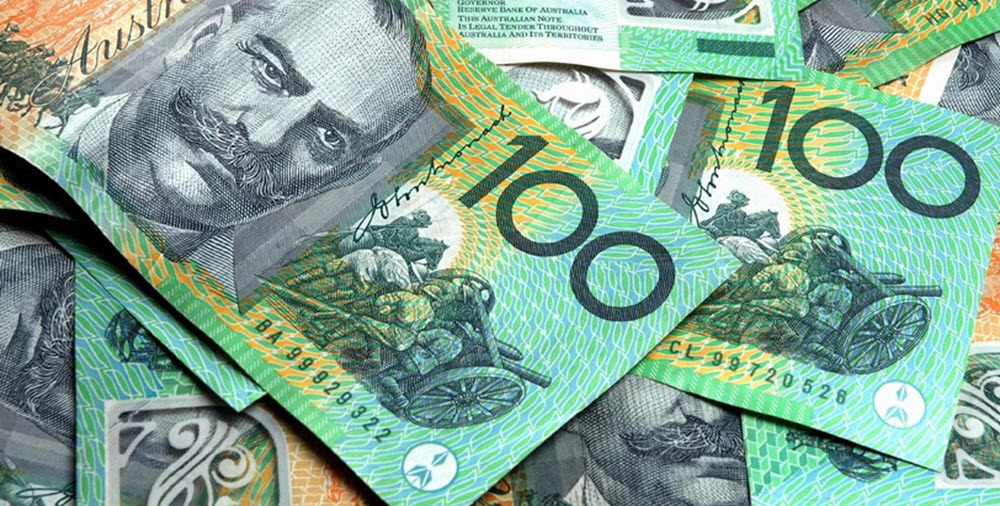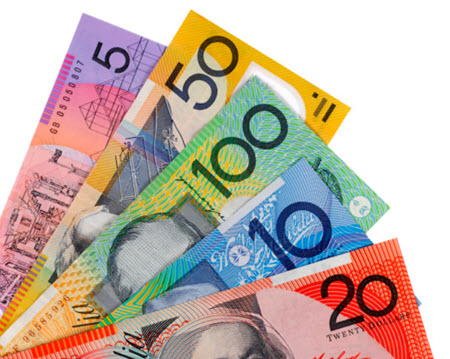In this article:
The Australian dollar (AUD) is one of the most frequently traded currencies on the FX market. Data from the year 2018 show that it was the fifth most traded currency for that year, behind USD, EUR, JPY, and GBP.
If we look at the ten most traded currency pairs in 2018, we find the AUD/USD on place #4.
- EUR/USD
- USD/JPY
- GBP/USD
- AUD/USD
- USD/CAD
- USD/CNY
- USD/CHF
- EUR/GBP
- USD/MXN
- USD/SGD

Where is it used?
Official currency
The AUD is the official currecy of Australia and seven of its external territories:
- Ashmore and Cartier Islands
- Australian Antarctic Territory
- Christmas Island
- Cocos (Keeling) Islands
- Coral Sea Islands
- Heard Island and McDonald Islands
- Norfolk Island
The AUD is also the official currency of three small sovereign states:
- The sovereign state Nauru
- The sovereign state Kiribati (alongside the local Kiribati dollar)
- The sovereign state Tuvalu (alongside the local Tuvaluan dollar)
Non-official currency
Examples of places where the AUD is widely used but isn’t the official currency:
- Paua New Guinea
- Tonga
- Vanuatu
- New Caledonia, a special collectivity of France, located south of Vanuatu
- Solomon Islands
- Cambodia
- Gambia
Zimbabwe
Since Zimbabwe abolished their own national currency in 2009, various foreign currencies have been utilized there instead of the national currency, and the Australian dollar is one of them.
Short facts about the Australian dollar
ISO 4217 abbreviation: AUD
ISO 4217 numerical code: 036
Sign: $ or AU$
Central bank: Reserve Bank of Australia
1 Australian dollar = 100 cents
Monetary policy
Unlike the government of countries such as Switzerland and Japan, the Australian government does not intervene in the FX market directly or indirectly to keep the AUD below or above a certain valuation in relation to other major currencies.
The interest rates in Australia are comparatively high.
Background
Prior to 12 December 1983, Australia maintained a fixed exchange rate. When the Australian pound was launched in 1910, it was pegged to the GBP. In 1946-1971, the Australian currency (first the pound, and from 1966 the dollar) was included in the Bretton Woods system. After the breakdown of the Bretton Woods system in 1971, Australia converted their peg to a fluctuating rate against the USD. On 12 December 1983, the Australian government floated the AUD, allowing its value to fluctuate freely based on supply and demand on the FX market.
Commodity prices as a dominant driver
The dominating thought among contemporary economists is that commodity prices is the dominating driver of the Australian dollar, and that this situation makes the AUD different from most of the other major currencies. Many of the most commonly traded currencies on the FX market have a tendency to become stronger during commodity price slumps, as investors move their resources from the stock market and into currency. For the Australian dollar, the trend has been the opposite. Autstralia’s trade balance chiefly depends on the export of commodities such as minerals and agricultural products. When there is a global boom, Australia’s export grows, and the value of the AUD goes up. When there is a global recession, the export shrinks, and this leads to a falling AUD value.
Notable events in the 21st century
- In April 2001, the AUD reached a record low against the USD, as 1 AUD equalled 0.4775 USD. The is the lowest ever value of the AUD against the USD since the AUD was floated.
- In late 2008, the AUD was almost on par with the USD, as 1 AUD equalled 98.49 USD.
- On 15 October 2010, the AUD reached parity with the USD for the first time since the AUD was floated. It even traded above the USD – but only for a few seconds.
- In November 2010, the AUD traded above the USD for a a sustained period of several trading days.
- In January 2011, it was announced that the Central Bank of Russia would start including Australian dollars in their foreign currency reserve.
- On 27 July 2011, the AUD reached a new record level, where 1 USD equalled 1.1080 USD. This might have been the result of the European sovereign debt crisis and Australia’s strong business ties with material importers in China and some other parts of Asia.
This article was last updated on: August 8, 2019
